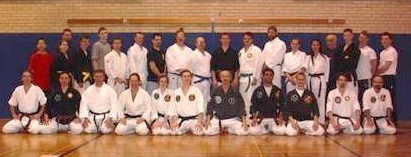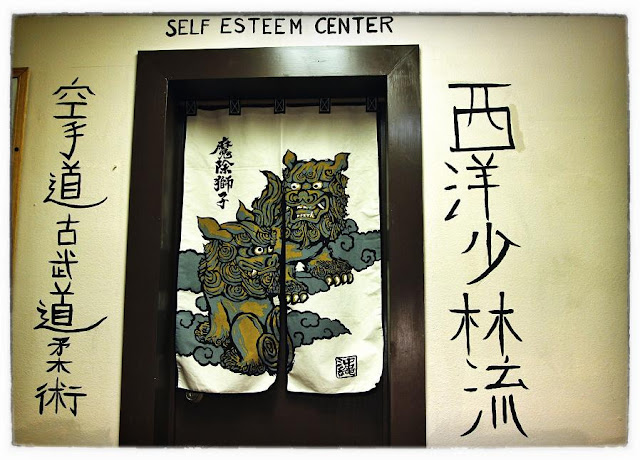 |
| Arizona School of Traditional Karate in Mesa, receives BEST OF MESA 2013 Award |
Few
martial arts schools, groups, associations and instructors in the world work harder at being the best than
Seiyo No Shorin-Ryu Karate Kobudo Kai(TM) and
Soke Hausel.
After teaching at the University of Wyoming for more than 30 years, Soke Hausel moved to the Phoenix Valley to open a dojo and hombu complex on the border of Gilbert and Mesa. Being acclimated to the university system over the years, his objective was to search out a university or college environment in the valley to teach martial arts, but bureauacracies forced the grandmaster to search for a private school.
The local
martial arts school (dojo) in the
Phoenix valley now serves adult students and families from Chandler,
Gilbert,
Mesa, Phoenix, Scottsdale and Tempe. The school also acts as a training center for local martial artists,
international groups and also as the administrative
hombu (headquarters) for Seiyo Shorin-Ryu Karate.
Prior to moving to the Phoenix valley in 2006, Soke Hausel had been recognized as one of the top
martial arts instructors in the world and had been inducted into 16 different Halls of Fame for his teaching methods.

Soke Hausel has imagination and creativity and enjoys teaching
martial arts. He was awarded
"Grandmaster of the Year" more than once in the past: 2005, 2004, 2003, 2002 and 2000 by such prestigeous martial arts associations as the World Martial Arts Black Belt Hall-of-Fame, Latin America Martial Arts Society, Universal Martial Arts Hall-of-Fame, World Martial Arts Hall-of-Fame, and Juko Kai International.
In addition, he was elected to the board of the
World Sokeship (Grandmaster) Council and the
United States Soke Council.
Unlike many self-proclaimed and so-called grandmasters in the West, Soke Hausel worked his ways through the ranks over many years and was certified as the grandmaster of
Seiyo No Shorin-Ryu Karate Kobudo Kai(TM) in 1999 by the
Zen Kokusai Soke Budo Bugei Renmei.
In 1998, Soke Hausel was awarded
"Instructor of the Year" by the KB Hall of Fame, and in 2004 was also awarded
"Instructor of the Year" by the American Karate Association. In 2001, he was awarded
"International Instructor of the Year" by the North American Black Belt Hall-of-Fame.
While at the University of Wyoming from 1977 to 2007, he taught martial arts to a few thousand students around the globe and received attention from may martial arts groups as well as from the Governor of Wyoming and the University of Wyoming president for his contributions. Where ever he went and taught martial arts, his martial arts school was recognized as the
Best of the Best.
Soke Hausel has also been elected to many dozen
Who's Who compendiums over the years.
 |
Soke Hausel at the Arizona School of Traditional
Karate on the border of Gilbert and Mesa. |



+prepares+to+break+rock+during+UW+karate+class.jpg)

.JPG)











+-+Copy.JPG)













